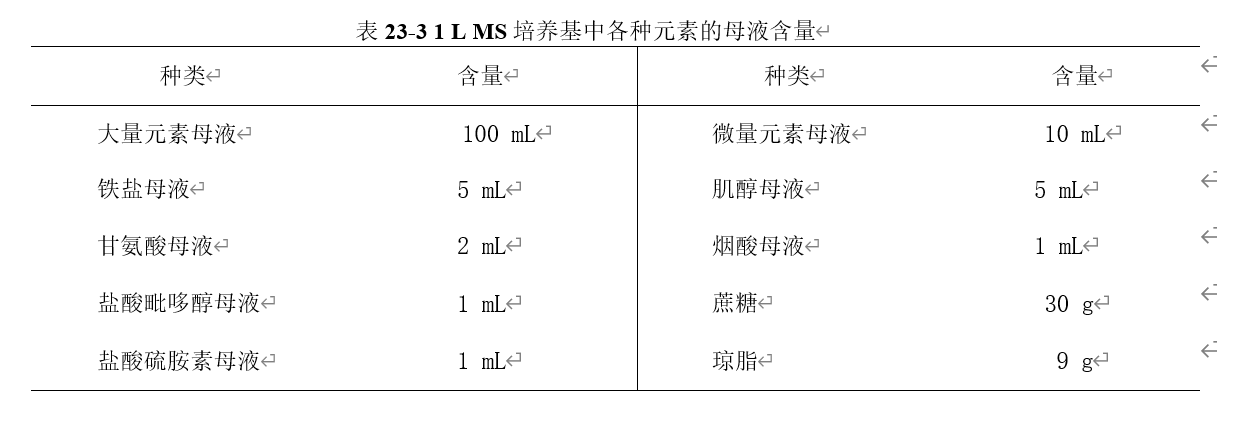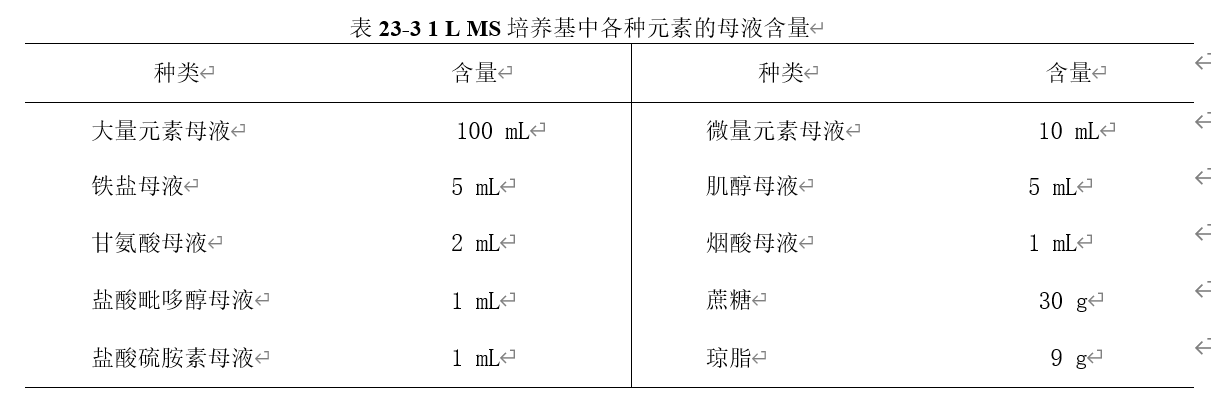Effect of plant hormones on the formation and differentiation of healing tissues
Plant tissue culture can study the laws of growth and differentiation of cultured parts without interference from other parts of the plant body, and can utilize various conditions to influence their growth and differentiation to solve theoretical and production problems. Meanwhile, tissue culture, as an important technology of bioengineering, plays a great role in basic theory and applied research as well as production practice, and has a broad application prospect. Through this experiment, we mainly understand the effect of plant hormones on the growth and differentiation of explants, and master the basic techniques of tissue culture through experimental exercises.
Principle
The differentiation of roots and shoots from healing tissues is affected by the relative concentrations of growth hormone and cytokinin in the medium. A high growth hormone/cytokinin ratio promotes the differentiation of roots; a low ratio promotes the differentiation of shoots; and when the ratio of the two hormones is moderate, the growth of healing tissues will be dominant or will not be differentiated. In this way, by changing the relative concentrations of the two hormones, the redifferentiation of healing tissue can be effectively regulated.
Operation method
Effect of plant hormones on the formation and differentiation of healing tissues
Principle
The differentiation of roots and shoots from healing tissues is affected by the relative concentrations of growth hormone and cytokinin in the medium. A high growth hormone/cytokinin ratio promotes the differentiation of roots; a low ratio promotes the differentiation of shoots; and when the ratio of the two hormones is moderate, the growth of healing tissues will be dominant or not differentiated. In this way, by changing the relative concentrations of the two hormones, we can effectively regulate the redifferentiation process of the healing tissue.
Materials and Instruments
1. Material: Chrysanthemum ligustrum. Move The basic process of phytohormone effects on healing tissue formation and differentiation can be divided into the following steps: (i) According to the MS medium recipe (see Appendix VII), each mother liquor was first prepared: 1 . According to Table 23-1, prepare 10-fold master mix of massive elements: 2. 100-fold mother liquor of trace elements according to Table 23-2 . 3. 200-fold mother liquor of iron salts: weigh EDTA-Na2 3.37 g, FeSO4 - 7H2O 2.78 g, dissolve with evaporated memory water and make up to 500 mL. 4. Organic component: 20 mg - mL-1 of inositol solution: weigh 2 g of inositol, dissolve with vaporized water and volume to 100 mL. 5 mg - mL-1 of nicotinic acid solution: weigh 12.5 mg of nicotinic acid, dissolve in vaporized water and then volume to 25 mL. 1 mg - mL-1 Glycine solution: 25 mg of glycine was weighed, dissolved in evaporated memory water and fixed to 25 mL. 5 mg-mL-1 Vidoxol Hydrochloride (Vitamin B &): weigh 12.5 mg of Vidoxol Hydrochloride, dissolve in evaporated water, and volume to 25 mL. 1 mg-mL-1 thiamine hydrochloride (vitamin BQ): weigh 10 mg of thiamine hydrochloride, dissolve in evaporated water, and volume to 100 mL. 5. phytohormone: 1 mg - mL-1 of Caiacetic acid solution: weigh 10 mg of NAA, dissolve with a small amount of 95% ethanol, and then volume to 100 mL with distilled water. 1 mg - ml-16-nodular adenosine: 50 mg of 6-BA was weighed, dissolved in a small amount of 1 mol L-1 HCL, and then reconstituted to 50 mL with evaporated water. (ii) Preparation of culture medium 1. Mix the mother liquor of various elements. Prepare MS medium, the content of various elements in 1 L of MS medium is shown in Table 23-3. 2. 2. Add NAA and 6-BA mother liquor according to Table 23-4. 1: 1. Add 600 mL of water to a triangular beaker (or stainless steel pot), add the appropriate amount of agar and sucrose, and dissolve the agar in a water bath, stirring constantly to prevent the bottom of the bottle (or the bottom of the pot) from burning or boiling over. Then mix the mother liquor of the above substances into it, mix well, adjust the pH to 8 with 1 mol - L 1 NaOH solution or 1 mol - L 1 HCL solution, and then make a volume of 1 L of distilled water .
2. Reagents: 75% ethanol; 1% sodium hypochlorite;
1 mol・L
-1 mol・L
HCL; agar; 6 adenosine; caiacetic acid;
Compounds in MS medium (see Appendix VII for the formula).
3. Instruments.
Ultra-clean bench; autoclave; scalpel; long-handled setter; triangular flasks;
Volumetric flasks: 1 each of 25 mL, 50 mL, 500 m, 1000 mL;
1 pipette: 1 each of 1 mL, 2 mL, 5 mL, 10 mL;
1 Petri dish; 1000 mL beaker (1,000 mL)
Alcohol lamp; kraft paper; white string; incubation chamber.



Dispense the medium into triangular bottles or test tubes, and put in the appropriate amount of medium according to the size of the container and the cultivation requirements. When dispensing, be careful not to stain the medium on the inner wall near the mouth of the bottle or tube, so as to avoid contamination during the cultivation process. Stir the medium in the cup from time to time during the dispensing process, otherwise the solidification ability of the medium in each bottle dispensed successively will be different. Covered with cotton plugs, wrapped with kraft paper, and then put into the autoclave, 121 ° C for 20 min, cooled and ready for use.
(iii) Sterilization and inoculation of materials
Take chrysanthemum flower buds that have been white for 2~3 days before flowering, firstly rinse the buds with tap water, then soak them in 75% ethanol for 15 s, then rinse them with sterile water for two times, and then soak them in 1% sodium hypochlorite solution for 15 min, and gently stir them from time to time. The flowers were washed three times with sterile water and then transferred to a sterile petri dish with filter paper. The ligule flowers were cut with scissors, and the ligule flowers were cut into 5 mm×5 mm pieces with a dissecting knife, and 6~8 pieces were placed in a 100 mL triangular vial. The inoculated ligule pieces were placed in an incubation chamber. The temperature of the incubation room was (25 š 2)笆, and the fluorescent lamp was illuminated for 12 h per day with a light intensity of about 2000 lx.
(iv) Observation and recording of results
After inoculation, the time and number of healing tissues and root buds appearing on the explants were observed and recorded for analysis and comparison.
Caveat
1. When preparing plant hormones, the amount of ethanol and hydrochloric acid used to dissolve the reagents should be small, and when diluting with distilled water, add them slowly along the inner wall of the beaker.
2. Sterilize the culture medium and materials as well as the instruments used in the inoculation process.
3. When dispensing the medium, the medium should not be attached to the mouth of the bottle to avoid contamination.
4. During the cultivation process in the greenhouse, check frequently and remove the contaminated materials or triangular flasks in time.
For more product details, please visit Aladdin Scientific website.
